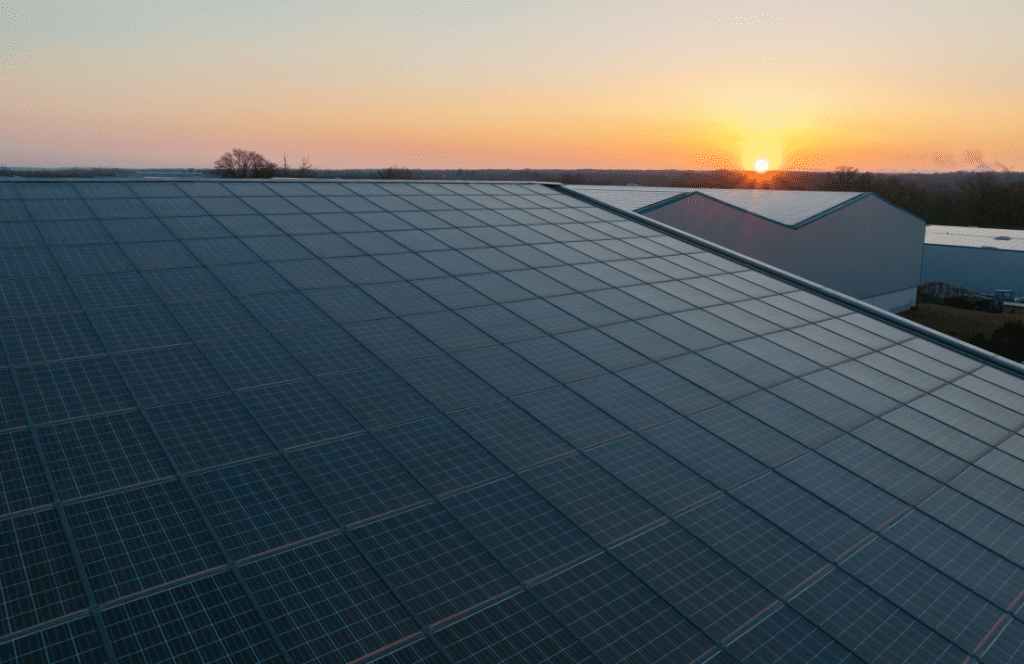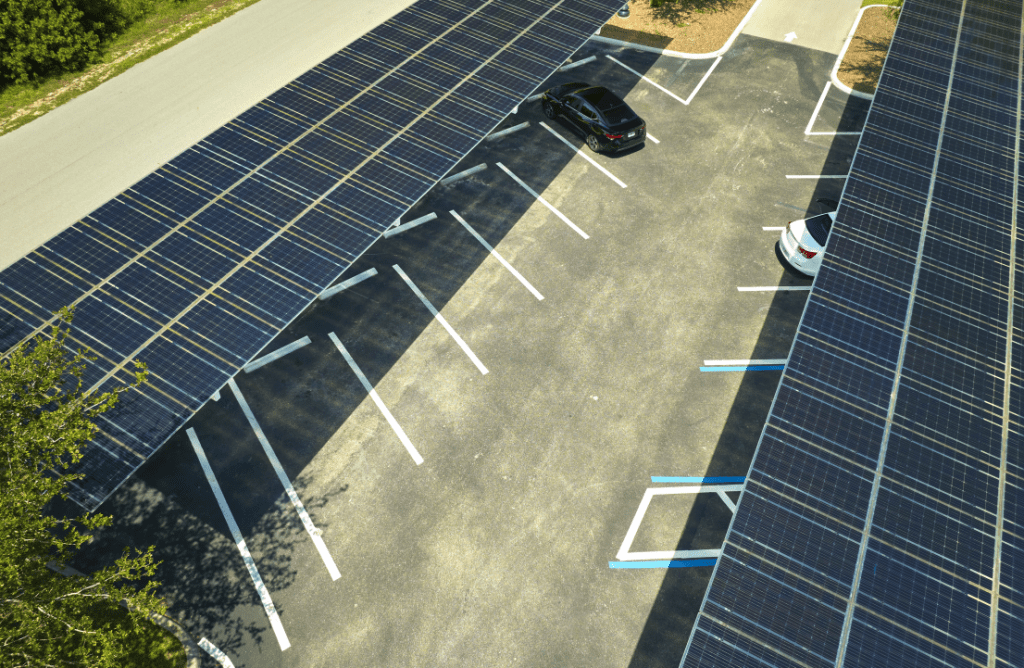Building-integrated photovoltaics: The A to Z of BIPV systems
What are BIPV systems?
Table of Contents
Construction is a strong contributor to climate change, with the construction sector accounting for 38% of global carbon emissions.
And as CO2 emissions from building operations reached an all-time high of around 10 GtCO2 in 2021 – a 5% increase compared to 2020 – it’s clear that the construction industry needs a greener method to combat climate change while also keeping up with the demand from a growing population.
That’s where building-integrated photovoltaics (BIPV) can help. BIPV is a form of solar system that can be used as a conventional functional part of a building while also generating electricity from solar energy.
BIPV can substitute traditional construction elements, such as roofs, façades, and skylights – an exciting development to seamlessly incorporate solar photovoltaics into modern architectural structures.
BIPV systems have already been incorporated into a wide variety of buildings all around the world. From the iconic Copenhagen International School in Denmark – whose 700 kW BIPV systems power 50% of the school’s total annual electricity consumption – to the impressive Solar Ark building in Japan. The Solar Ark’s BIPV systems generate 630 kW from over 5,000 solar panels, totaling around 500,000 kWh of energy per year.
With the global BIPV market rising to a value of roughly $10.8 billion in 2022, it’s clear that BIPV are here to stay, with more and more people looking to green solutions for energy generation over time.
In this article, we will discuss the differences between BIPV and regular PV systems, the different forms you can find BIPV in, the advantages of BIPV, as well as some real-life examples of BIPV systems around the world.

What are the differences between BIPV and regular PV systems?
There are many different ways in which BIPV are shaping the future of our buildings. Here we will outline some of the most common forms of BIPV you might see in modern architecture.
Firstly, there is the complete solar roof. This is where the solar panels form the roof of a building, using solar tiles – sometimes known as solar shingles – to turn any outward-facing surface into a power generator.
Then there is the solar façade. This is where thin-film PV modules are used on curved surfaces or semi-transparent façades to maximize the building’s energy efficiency. This is especially useful on architectural structures that aren’t a conventional shape, as the thin-film PV modules are more flexible and bendable than thicker panels designed for flat surfaces.
Lastly, another popular form of BIPV is seen in solar windows and skylights. These not only keep natural light flowing into a room but also generate power from solar energy.

What are the different forms of BIPV?
There are many different ways in which BIPV are shaping the future of our buildings. Here we will outline some of the most common forms of BIPV you might see in modern architecture.
Firstly, there is the complete solar roof. This is where the solar panels form the roof of a building, using solar tiles – sometimes known as solar shingles – to turn any outward-facing surface into a power generator.
Then there is the solar façade. This is where thin-film PV modules are used on curved surfaces or semi-transparent façades to maximize the building’s energy efficiency. This is especially useful on architectural structures that aren’t a conventional shape, as the thin-film PV modules are more flexible and bendable than thicker panels designed for flat surfaces.
Lastly, another popular form of BIPV is seen in solar windows and skylights. These not only keep natural light flowing into a room but also generate power from solar energy.
What are the advantages of BIPV?
Energy efficiency
By collecting solar energy to generate electricity, BIPV systems mean that the building relies on fewer energy resources for power. As the sun’s energy is a completely renewable resource, this then reduces reliance on traditional, finite sources like gas or coal.
Aesthetics
Unlike traditional BAPV solar panels, BIPV are integrated into the design of the building. This allows architects to integrate PV modules as an intrinsic part of the building’s visual identity, with the BIPV system combining form and function.
This is usually favored by architects, who often feel that the “add-on” nature of regular BAPV solar panels and their associated fitted brackets and mounts detracts from the building’s looks.
As part of the building’s integral structure, BIPV modules are also customizable in size, color, and shape to better fit in with the overall design. This allows them to be integrated into any structure, from houses to skyscrapers.
Reduced operational costs
BIPV aren’t just about greener energy – they’re also considered a wise financial move. By shrinking energy bills, this significantly reduces the operational costs of BIPV systems.
These reduced material and electricity costs also mean the building sees a better return on investment, making BIPV systems a good choice for long-term financial and environmental sustainability.
Reliability
Once installed, BIPV systems are more reliable and require minimal maintenance.
In the long run, this means buildings can rely on stable energy generation without the need for regular upkeep and maintenance, further reducing their outgoing costs.
Space-saving design
As BIPV systems can be integrated into the outer walls, windows, or roof of a building, this means no additional space is taken up by bulky mounts or brackets.
By choosing a solution that’s space-conscious from early on in the building’s design process, architects and construction companies can ensure that BIPV systems optimize every inch of space for more efficient energy capture and power generation.
Before undertaking any BIPV projects, just make sure you consult local operators to ensure your project complies with laws and regulations.
Less pollution
By generating clean energy without emitting any pollutants or greenhouse gases, BIPV systems are a great way to massively reduce a building’s carbon footprint.
In addition, particularly in hot countries that experience a lot of sunlight, there is another added benefit of using BIPV systems: By using BIPV to provide shade and insulation for a building, this can also help to reduce a building’s overall energy consumption.
Shading windows with BIPV systems, for example, can help to reduce the amount of heat that enters the building. This in turn minimizes the use of air conditioning and other energy-hungry cooling systems, thus reducing energy consumption and associated carbon emissions.

Hoymiles microinverters at play in BIPV systems
To get the best results from BIPV systems, it’s especially important to incorporate BIPV into the initial building design, swapping out traditional materials like roofing shingles for PV components like PV shingles, for instance.
By working BIPV into the architectural design from the get-go, this reduces the additional expense of any late additions of BAPV systems, which may not fit along with the building’s design, along with the hassle of installing separate mounting systems.
Furthermore, in BIPV projects, the larger surface area of the PV modules means it is more likely that some of the solar panels will be in the shade at certain times of the day or between different seasons. So to compensate for this, Hoymiles microinverters enable each PV module to operate independently. This ensures that modules in the shade don’t compromise the generating power of other modules in the system.
But when it comes to the inner workings of BIPV, there’s a problem. Unlike regular solar projects, BIPV don’t have an existing structure – like a roof, for example – to rely on. Any additional weight could cause damage to the BIPV system, or render it too heavy to fit to buildings safely, so any potential addition needs to be evaluated.
And it also means the inverters used in these projects need to be light.
At Hoymiles, we provide microinverters with BIPV projects in mind, so they are compact and light enough to suit any BIPV system.
In China, one railway station used Hoymiles microinverters in its BIPV roofing panels to make sure it could harness clean solar energy without adding any unnecessary load to the structure.
And in Finland, Hoymiles microinverters were used in BIPV roofing tiles for a lakeside cabin, to make the most of the summer sun while keeping the structure light and efficient.

Conclusion
In a world grappling with climate change and a construction sector contributing 38% of global carbon emissions, BIPV have emerged as a transformative solution.
By merging form and function to harness solar energy and generate electricity while seamlessly integrating into architecture, BIPV helps to reduce reliance on other energy sources, offer aesthetic flexibility, and reduce operational costs.
Most importantly, BIPV significantly reduces pollution by generating clean energy. With a burgeoning global BIPV market valued at around $10.8 billion in 2022, it’s clear that BIPV are quickly becoming a key choice for green power technology in the construction landscape.
